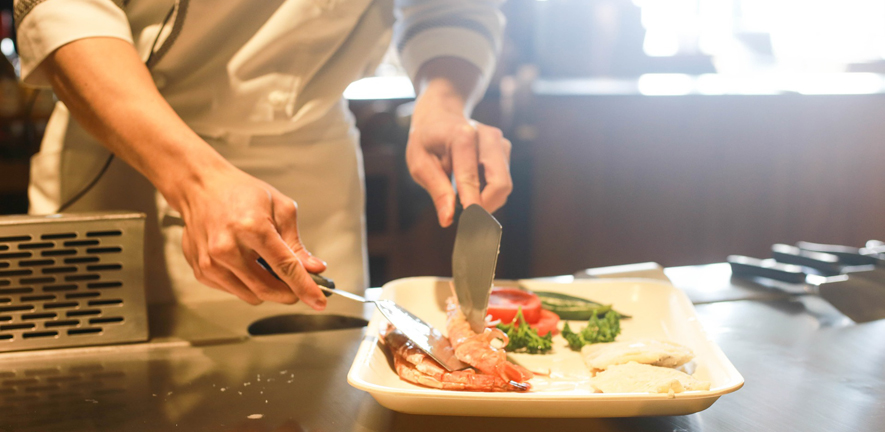09 Jun, 2023
How to Reduce Operating Costs at Your Restaurant
What are Restaurant Operating Costs?
So what are operating costs?
Restaurant operating costs are the sum of all of the things you need to pay for to run your business. For the food service industry, operating costs include things like payroll, rent, and food costs.
These costs can be categorized as fixed costs, variable costs, and semi-variable costs, respectively. This means they’re the same month over month, they change over time, or are a combination of both.
What are Operating Expenses?
Operating expenses are the maintenance and administrative costs of running your business on a day-to-day basis. These are the “extra” expenses that aren’t directly associated with your product or service, but are necessary costs for operation.
For a restaurant, operating expenses can include POS and other restaurant tech licenses, utility costs like energy and water, and kitchen equipment and repair costs.

9 Ways to Reduce Operating Costs in Your Restaurant
Now that you understand the nuanced differences between operating costs and expenses, it’s time to get to the good stuff: learning how to reduce operating costs.
We’ve compiled 10 tried-and-true tips for reducing operational costs at your food service business, including:
- Work with food suppliers
- Join a restaurant buying group
- Minimize food waste
- Reduce employee turnover
- Automate manual processes
- Make certain foods from scratch
- Buy other food items pre-made
- Lower your utility bills
- Optimize staff scheduling
You should see a difference if you implement just one of these techniques, but we recommend implementing all of them to maximize results. Just keep in mind that as you cut costs, you should also do your best to maintain the quality of food and service your customers expect from you. This will help to prevent your savings strategy from backfiring and hurting your sales.
1. Work with Food Suppliers
Restaurants spend between 20% and 40% of their operating costs on food. Reducing this major operating cost can translate to significant savings and higher profit margins. If your restaurant purchases food supplies from consumer grocery stores, it’s time to start working with food suppliers instead.
Food suppliers give restaurateurs access to wholesale rates and special discounts. Working with national vendors, like US Foods in the United States or Dot Foods in Canada, is an obvious choice among restaurateurs.
Another option that’s gaining popularity is working with local farmers to source ingredients. While smaller-scale suppliers may charge more than national suppliers, they can give you a discounted rate from what they offer consumers in exchange for a high volume of orders.
Plus, if you choose to pay more for local ingredients, you can charge more for your dishes. A study by Penn State’s School of Hospitality Management found that people would be willing to pay 18% more for local ingredients. Just remember to update your menu descriptions to include the local origin of each item to justify the higher prices.
2. Join a Restaurant Buying Group
Typically, the more you buy from a food supplier, the higher the discount they can give you. This principle means that restaurant chains, which have high demand for supplies, usually benefit most from a bulk discount. As for independently owned restaurants, it can be difficult for them to access similar deals.
Fortunately, there’s a way for independent restaurants to secure similar savings. Restaurant buying groups, which are a type of group purchasing organization (GPO), are comprised of independent restaurants that pool their orders together to offer suppliers more volume, and therefore, get a higher discount than they’d be able to negotiate on their own.
According to Eatery Buying Group, your restaurant can save up to 30% on food supplies by joining a buying group.
3. Minimize Food Waste
Another way to reduce operating costs is to reduce food waste. When you make the most of each ingredient – by using scraps in an innovative way, for example – you can maximize your profits by creating more sellable items without adding to your inventory costs.
A great method for reducing food waste is building your menu around your current inventory, versus the other way around. Create specials that use up the food you have left over before it spoils. For example, you may need pretty strawberries for a fruit salad, but you can use ones that don’t look as nice in smoothies.
4. Reduce Employee Turnover
According to Cornell’s Center for Hospitality Research, turnover costs the hospitality industry $5,864 per employee. That figure includes how much money a restaurant would have to spend on lost productivity, rehiring, and training a new employee.
The restaurant industry as a whole experiences an annual turnover rate of 73%. For fast food venues, the restaurant turnover rate can be as high as 130-150%. That means that for a team of 10 fast food employees, restaurateurs would have to hire – and retrain – up to 15 employees each year to replace the original ten 10 who left. That translates to almost $90,000 spent on hiring replacements.
 5. Automate Manual Processes
5. Automate Manual Processes
The typical labor cost percentage for restaurants is 30%. That means payroll makes up almost one-third of operating costs for restaurants.
The easiest way to reduce labor costs is to automate manual processes, which reduces payroll costs by making your employees more efficient. When your employees can do more in less time with the help of technology, your business can schedule them for shorter shifts or to work less often.
There are plenty of ways to automate manual processes. For example, instead of only taking takeout orders over the phone, introduce online ordering so your hosts are free to help on-premise guests. Use self-serve kiosks to accept more on-premise orders with less staff help. And instead of calling guests to remind them of reservations, use a reservations platform that automatically sends guests reservation reminders.
Another option is to automate your inventory tracking. Café Crêpe went from spending up to eight hours each week on accounting to less than one hour on it when they switched from a manual, paper system for inventory management to using inventory software MarketMan, which integrates with their TouchBistro POS.
6. Make Low-Cost, Low-Labor Foods from Scratch
The more processed a food ingredient is, the more expensive it is. Your restaurant can reduce operating costs by making things that aren’t labor intensive from scratch, instead of buying them pre-made.
For example, you could continue to buy the elaborate cakes on your menu pre-made from a local bakery, but start making simple cookies in-house, because the cost of ingredients like flour, sugar, and eggs are relatively cheap, and the recipe requires minimal manual labor.
7. Buy Labor-Intensive Foods Pre-Made
While the food costs for certain dishes may be cheaper if you make them from scratch, you also have to factor in the labor costs, which could make those same dishes too expensive to make in-house. Purchasing pre-made, or partially prepared, foods and ingredients can save you money in some cases.
The Balance suggests buying labor-intensive things like sauces, frozen French fries, baked goods, and pasta pre-made for the biggest savings.
8. Lower Your Utility Bills
Another way to reduce operating costs is to lower your utility bills. Restaurants use a lot of energy and water to prepare food, light dining rooms and kitchens, and keep the venue at the right temperature. Simple adjustments can help you make a positive impact on the environment AND save on utilities.
9. Optimize Employee Scheduling
Payroll costs make up about 30% of operating costs for food service businesses. That’s a massive expense! If you create a staff schedule based on a gut feeling instead of data, you’ll inevitably over- or under-schedule staff, and run into costly overtime.
You can reduce payroll costs by using data to power your scheduling decisions. Look for employee scheduling software that integrates with your POS and incorporates data about historical demand, upcoming reservations, and even weather forecasts to build schedules that ensure you only schedule the staff you truly need.
Scheduling tools also save you time – and therefore money – by automating scheduling, so you can build schedules in a few clicks, rather than spending hours trying out different shift combinations on a spreadsheet.
As you can see, there are lots of strategies you can implement to reduce operating costs and expenses at your food service business. The more you save, the higher your profit margins, and the more money you have to invest in growing your restaurant business.
